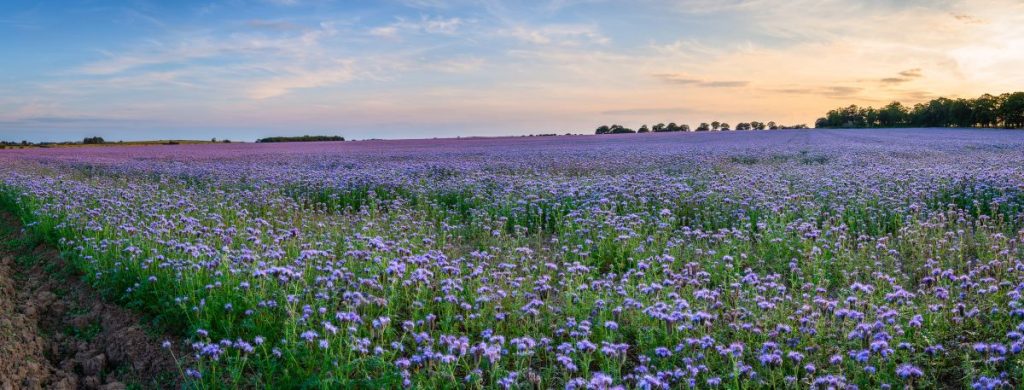Green manuring is a technique used in permaculture and regenerative agriculture to care for soils, along with mulching, crop rotation, intercropping and composting.
For thousands of years, farmers worldwide have recognized the value of green manures and taken advantage of off-season plant growth to enhance their soil and the next crops’ yield.
In this article, you will discover everything you need to know about green manure, with answers to commonly asked questions and easy steps to help you plant and use green manure.
What is Green Manure?
Green, undecomposed plant material used to fertilize soil is called green manure.
If we look at the green manure definition according to the Oxford dictionary, it defines green manure as “plants that are dug into the soil in order to improve its quality.”
People use the term green manure to describe plants or crops grown specifically to enrich soil.

What Are Green Manure Crops?
Green manure crops, also called cover crops, are crops grown specifically to improve the soil as green manure.
They are often grown as part of a crop rotation between other nutrient-hungry crops to replenish the soil.
Although the terms “green manure” and “cover crop” are related and often used interchangeably, they are not the same.
A cover crop is a crop that is grown for the benefits it provides to the soil and environment rather than for harvest.
People grow cover crops to improve soil structure, reduce soil erosion, suppress weeds, break pest cycles and supply nutrients.
When cover crop plants are plowed or dug into the soil, they become green manure.
What is The Best Green Manure Crop?
Many consider legumes to be the best type of green manure crops. As they help to increase the nitrogen levels in soils as well as provide organic matter.
However, what is best for you will depend on the type of soil you have, your crop rotation strategy and what other functions you require from your green manure crop.
Planting a mixed green manure crop with several different plant species grown together is recommended. A single mixed green manure crop can provide multiple benefits for your soil.
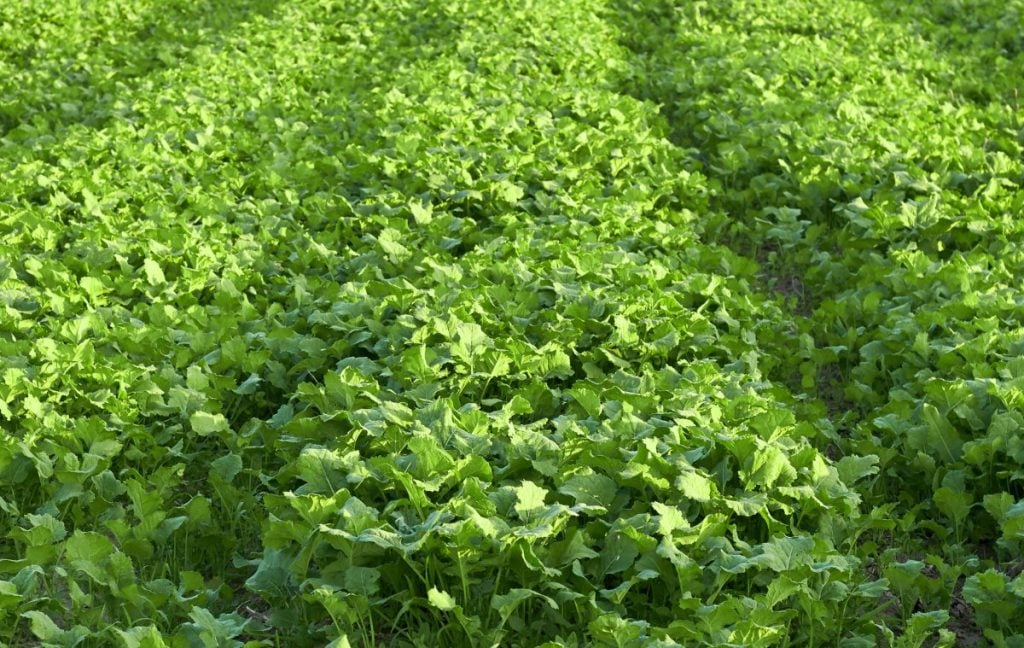
What is The Main Source of Green Manure?
When green manuring, your green manure plant matter can be obtained or sourced in different ways.
In most parts of the world, the main source of green manure is cover crops.
The first, and most common way to create green manure, is to grow green manure cover crops in the same area as your main crops.
With this method, the green manure crops can be grown as part of a crop rotation or by intercropping or undersowing your main crop.
Another way to source green manure is to grow green manure crops elsewhere. Then cut them and bring the green cutting to your growing site to be turned into the soil.
The third way to source material for green manuring is by collecting green leaf manure from plants growing in forests, hedges or wastelands.
Many South Asian countries have used this method of green manuring for centuries.
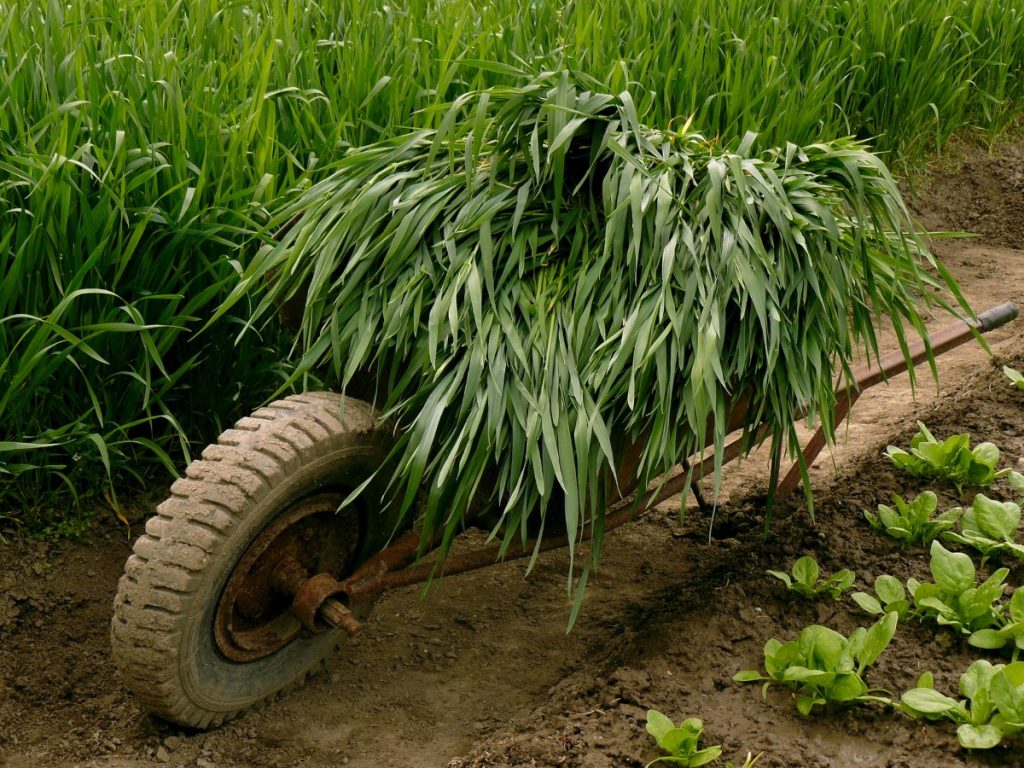
Why Use Green Manure?
Green manuring is a good way for organic farmers and gardeners to improve their soil safely.
When using green manure as an organic fertilizer, you can be sure you are not adding pesticides or other unwanted substances to the soil.
Apart from nitrogen-fixing and increasing organic matter in soils, green manure crops have a host of other benefits for your permaculture farm or garden.
However, like all permaculture techniques, green manure has both advantages and disadvantages.
Your unique situation and requirements will help you decide whether green manure is the right solution for you.
Advantages of Green Manure
There are many advantages to using green manure as a technique to care for your soil. These include:
1. Prevent Soil Erosion and Nutrient Leaching
Green manure cover crops act as a living mulch and help to protect soil from harsh elements.
Roots hold soil particles in place, while plant bodies shield the soil from extreme rains and the drying effects of the sun and wind, preventing soil erosion.
Green manure crops also minimize the leaching of nutrients into the environment.
They draw nutrients into their bodies and lock them in until digging in the green manure. The plants then decompose, and nutrients are slowly and gradually released back into the soil.
2. Support Beneficial Microorganisms
Green manure increases the number and biodiversity of beneficial microorganisms that play a crucial role in soil structure.
Their activities help create soil aggregates, enhance soil porosity and mix in organic matter.
The roots of green manure crops provide essential nutrients and stimulate soil organisms while the plants are growing.
Once plowed into the soil, the decomposition of the green matter feeds the earthworms and microorganisms.
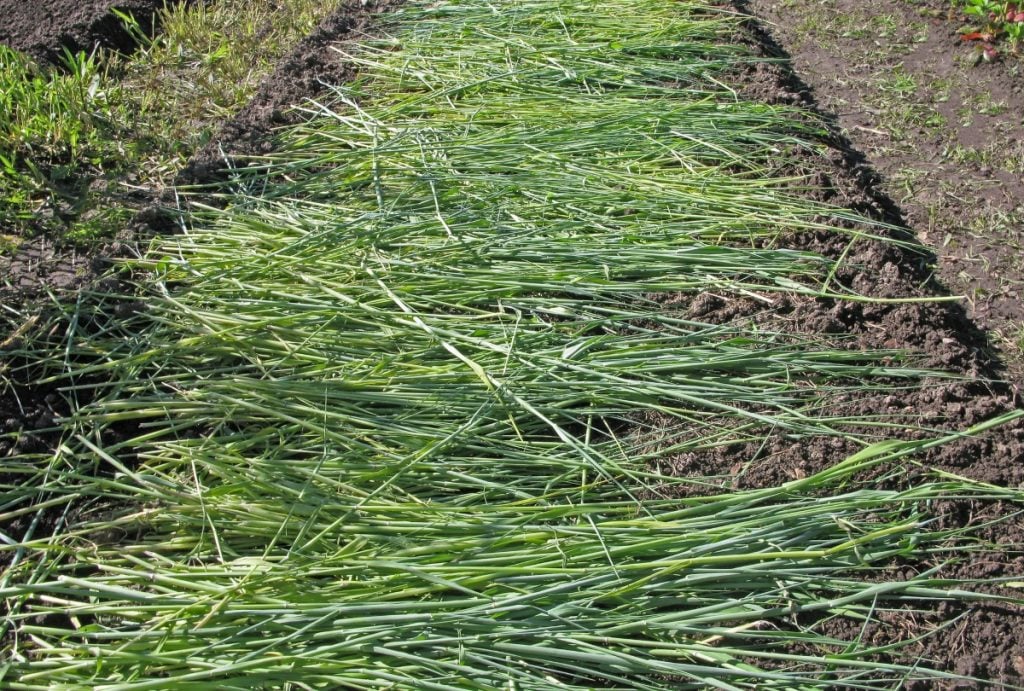
3. Provide Nutrients and Organic Material
Digging green manure into soils increases the levels of nutrients that plants need to thrive.
Legumes add nitrogen to the soil, and green manures, like buckwheat and lupins, enrich the soil with phosphorus.
Other green manure crops can supply iron, potassium, calcium and other trace minerals.
Green manures also increase the organic material in soils, improving the soil structure and fertility.
4. Suppress Weeds
Dense sowing of fast-growing green manure can prevent weed development and disrupt the growing cycle of weed plants.
The quick, leafy growth of some green manure smothers weeds and outcompetes weeds for nutrients, water and space.
The roots of some green manures release chemicals that inhibit the germination of other seeds.
5. Improve Soil Structure
Green manures like alfalfa, red clover and chicory have deep penetrative tap roots that, as they grow, open up compacted soils. Thus, allowing drainage to occur more freely and leaving organic matter in the soil.
Organic matter binds soil particles together and helps to create soil aggregates. These large particles allow improved soil aeration, nutrient distribution, and water retention.
6. Provide a Habitat for Natural Predators
There are different ways of controlling pests, including boosting the number of their natural predators.
Green manure crops can serve as a home for predatory insects, such as ground and rove beetles. These beetles are skilled hunters of various pests and caterpillars.
They can also attract natural predators. An example of this is the blue flowers of Phacelia that attract and shelter hoverflies, which feed on aphids.
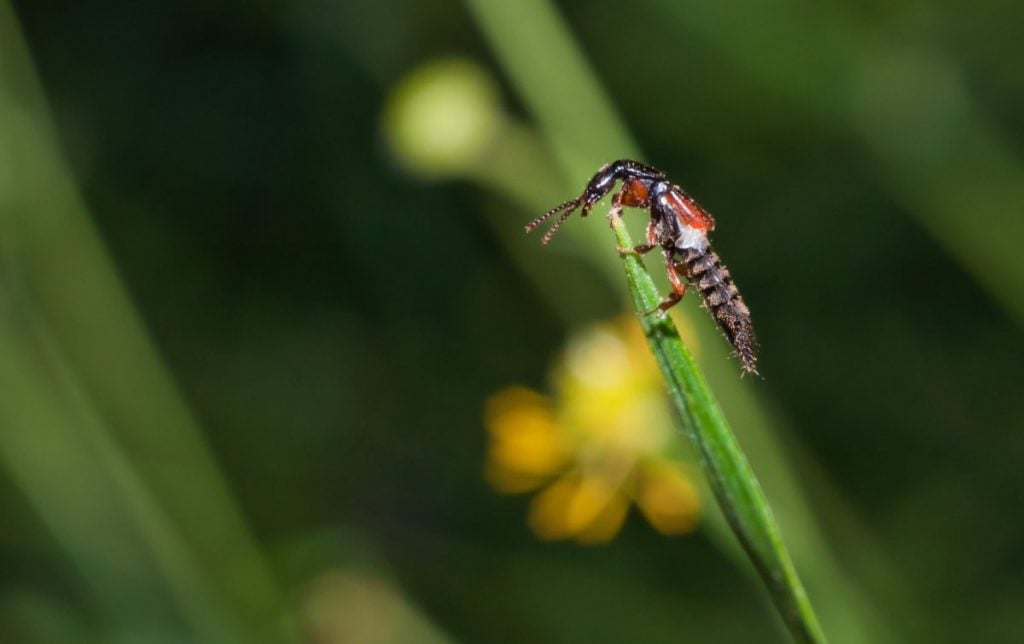
7. Interrupt Pest and Disease Life Cycles
Green manure can disrupt the life cycles of various pests and diseases, but its effectiveness depends on proper management.
Rye, for example, is effective in limiting the population of pests that infest potatoes and other vegetables.
And, some varieties of mustard have a high glucosinolate content. In the right conditions, they can deter and even kill pests and diseases.
8. Increase Yields
The increased organic matter, improved soil structure and added fertility that green manures bring result in better yields with lower expenses and fewer inputs.
Disadvantages of Green Manure
There are also some disadvantages to consider when deciding if green manure is suitable for you. These include:
1. Consume Time and Space
As a farmer or gardener, you often have to allow up to about a month after cutting and digging in the manure crop before sowing a new marketable crop.
Unless green manure crops are undersown or grown as intercrops, the time they take to grow and decompose could mean losing a marketable crop.
2. Establishment Costs
There is a cost to producing green manure crops. This cost includes the price of the seeds, labor to prepare the soil and the planting time lost while green manure grows and decomposes.
The costs of planting green manure shouldn’t exceed the potential soil and nutrient benefits.
3. Require Careful Rotation Planning
Planting the incorrect green manure as part of a crop rotation can restrict your next choice of crop.
For example, when planning to grow cabbages, cauliflowers or broccoli in a bed, you should not recently have grown a mustard cover crop as they are also a brassica.
4. Over-Fixation of Nutrients
Excessive use of legumes as green manure may cause over-fixation of nitrogen into the soil, making it toxic.
When you have too much nitrogen in your soil, your plants look lush and green, but it substantially reduces their ability to fruit and flower.
5. Compete With Cash Crops
If not planned and managed correctly, green manure crops may compete with marketable crops.
An example of this would be allowing under-sown green manure crops to flower and pull nutrients from the soil.
6. Harbor Snails and Slugs
A green manure crop can provide a habitat in which snails and slugs breed. The increase in their numbers may be very detrimental to your vegetables.
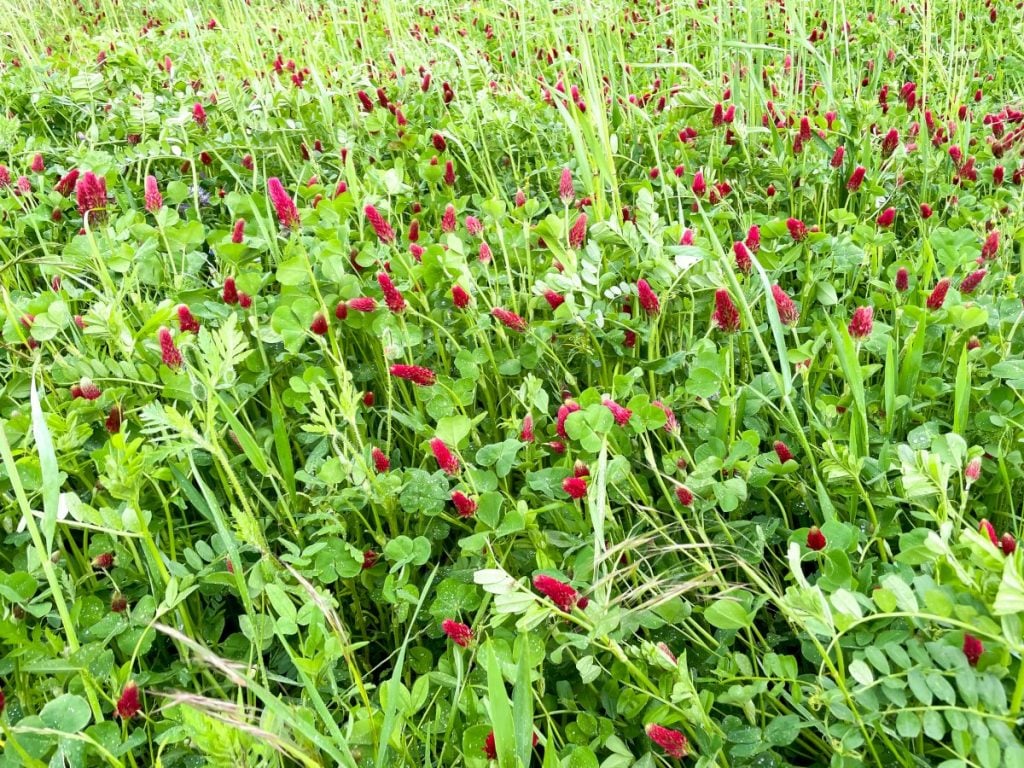
What Are The Types of Green Manure?
There are several green manure plant species, and people categorize them in various ways.
However, green manure crops can be broadly divided into two main types, legumes and non-legumes.
Legumes
Legume green manures build soil fertility. They have roots that work with the bacteria in the soil to trap nitrogen from the atmosphere.
This process only happens when the correct strains of bacteria are present and is known as nitrogen-fixing.
These bacteria are present naturally in the soil but adding inoculants to legume seeds before sowing can aid the nitrogen-fixing process and improve the yield.
Examples of legume green manures are clover, soybeans, letches, alfalfa, peas, beans, and lupins.
Non-legumes
Non-legume green manures make good cover crops. Although they are not nitrogen fixers, they prevent nitrate leaching, smother weeds and add organic matter to soils.
Examples of non-legume green manures are ryegrass, phacelia, turnips, chicory, oats, barley, mustard and buckwheat.
Apart from these two broad categories, green manure crops are often categorized based on their function or purpose.
Here are some of the functions of green manure crops.
- Cover crops cover bare soil and prevent erosion. Examples include vetch, oats, winter rye, clovers, Sirius peas and lentils.
- Break crops interrupt the lifecycle of pests and diseases. Examples include alfalfa, brassica, mustard and rye.
- Nitrogen-fixing crops are leguminous crops planted to improve the nitrogen levels in soils. Examples include beans, peas, vetches, lupins, clovers, alfalfa and soybeans.
- Nutrient conserving crops minimize nutrient leaching and add additional nutrients into the soil. Examples include ryegrass, buckwheat, oil radish and red clover.
- Smother crops are grown to outcompete and suppress weeds. Examples include winter rye, sweet clover, buckwheat and oil radish.
Green manure crops can also be categorized by when and how you use them. The four resulting types are:

Long-Term Green Manures
Long-term green manures are green manures that are planted and left to grow for more than a year.
Farmers often plant long-term green manures in fields as a part of organic farming rotations.
If a farm has animals, these fields are used for grazing or cut as fodder.
Alternatively, if there is no livestock, farmers cut the green manure crop during the summer months. And leave the cuttings on the ground as mulch.
Long-term green manures are often pure clover if nitrogen-fixing is a priority or a grass and clover mixture if increasing organic matter is also important.
Long term green manure grown around the base of fruit trees in orchards, keeps weeds at bay and provides a habitat for pest-eating predators.
A green manure mix of red and white clover and perennial ryegrass is a favorite. Other long-term green manures are lucerne or alfalfa, sainfoin, cocksfoot and timothy.
Winter Green Manures
Winter green manures can be legumes but are more often non-legume cover crops like winter ryegrass that minimize nitrate leaching during winter.
These green manures are often called winter cover crops and are sown in the autumn to be cut and plowed into the soil the following spring.
Winter crops provide a way to utilize land that would otherwise be bare to replenish soils.
Examples of winter green manures are common vetch or tares, field beans, grazing rye, brassicas and ryegrass.

Summer Green Manures
Summer green manures are short-term, fast-growing crops, usually legumes, grown to provide a nitrogen boost. But, non-legumes can also be used for pest control or to attract pollinators.
You can sow summer green manures early in spring or between two summer crops as catch crops.
Catch crops are filler crops that grow in empty spots before or after the main crop. You can also interplant catch crops with the main crop.
Examples of summer green manures are crimson, Persian and sweet clover, fenugreek, lupins, phacelia, buckwheat and white mustard.
Undersown Green Manures
A good way of using main planting season green manures is to utilize them as under crops.
Under sow low growing green manures three to four weeks after planting your main crops.
Doing this gives the green manure an extended growth period, helps with organic weed control and can assist with pest control.
At the end of the season, the green manure can be incorporated into the soil or left to overwinter.
Low growing green manures, well suited to undersowing are subterranean clover, yellow trefoil or black medic.
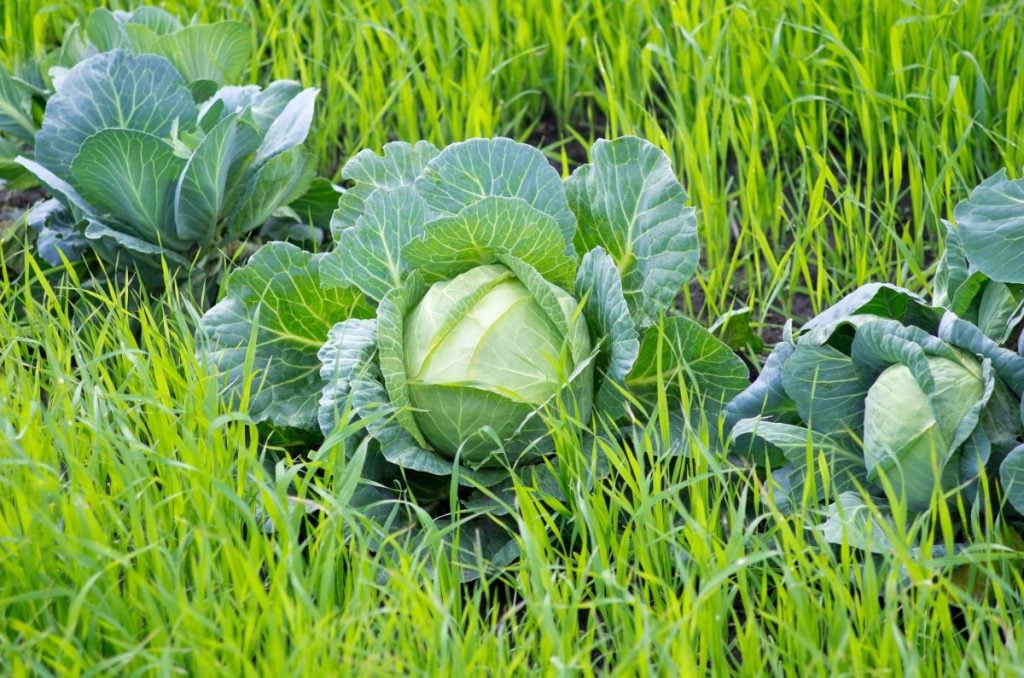
How to Choose Green Manure Crops
The options are endless when choosing plants for green manure, and most fast-growing plants will work.
However, certain plants have characteristics that make them ideal for use as green manure.
Which green manures you choose will depend on when you want to plant, your soil type, local climate and requirements.
Here are some things to consider when choosing green manure:
- The cost of the seed
- The speed of germination and growth
- How long the plants live
- Their tolerance to mowing or grazing
- Suitability as animal forage
- Ability to smother weeds
- Ability to grow in nutrient-poor soil
- Nitrogen-fixing capacity
- Resistance to pest and diseases
- Ease of incorporation into your soil
- Speed of decomposition
- Chance of returning as weeds
This green manure seed website has a practical table that can help when selecting your green manure seeds.
Seasonal, green manure seed mixes are also readily available online and at local gardening stores, making it easy to sow your first green manure crop.
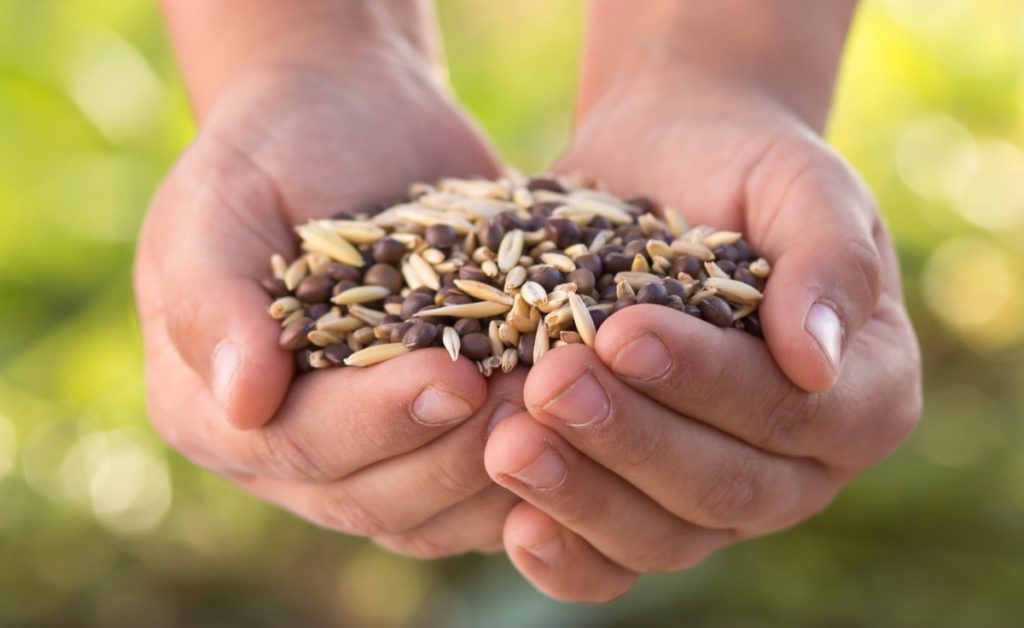
How to Plant Green Manure
It is not difficult to plant green manure crops in your vegetable garden or orchard. Simply follow these easy steps.
1. Prepare the Soil
The first step, regardless of your soil type, is to prepare the soil for planting.
To do this, loosen and turn over the soil, remove any weeds and break up any large clumps.
Add compost if necessary, then rake the seedbed evenly and lightly tread the soil.
2. Sow Green Manure Seeds
Evenly scatter a good quality seed mix over the area by hand. Be generous to ensure good coverage.
Mixing the seeds with some soil before scattering them helps you have more control over where they go.
You can sow larger seeds n rows if you wish, but this is not as effective for weed suppression.
3. Rake the Seeds in
After you scatter the seeds, rake them in or sprinkle with compost to cover them sufficiently for germination. Doing this helps to prevent birds from eating your seeds.
In smaller areas, you can also use a layer of shade cloth to help with the birds until the seeds have germinated.
4. Keep the Seedbed Moist
Once you have raked the seeds in, water them well. Alternatively, make sure you plant your seeds when rain is expected and let nature water them for you.
The seedbed must be kept moist, and the seeds must not dry out during the germination period.
In dry weather, you may need to water daily until your green manure crop becomes established.
In very hot weather conditions, sprinkling straw over the seedbed or using shade cloth also helps keep the seedbed from drying out.
In around six to eight weeks, your plants will be ready to use as green manure.

How to Use Green Manure Crops
There are a couple of ways to cut and incorporate your green manure into the soil. Which is best for you depends on the size of your area and how soon you want to plant your next crop.
Usually, when ready, green manure is cut and then allowed to wilt for a few days before being dug into the soil.
To dig green manure plants in, use a sharp spade, or plow if large scale farming, and turn the plants back into the soil, chopping up any large clumps. Aim to bury the green manure plants 15 to 18cm deep.
Wait three to four weeks before planting your next crop.
In small vegetable garden beds, you can cut or mow the green manure and lay the cuttings in the bed.
Wait a week for the cuttings to start decomposing and then plant seedlings into the mulched bed. This method saves a lot of time.
If you are a no-dig gardener and don’t want to dig the green manure in, try the method below.
After chopping and dropping your green manure, cover the plants with a tarp, large sheets of black plastic, or cardboard held down with logs, rocks or bricks and leave it for four weeks.
Covering the beds holds in the moisture and speeds up decomposition. Four weeks later, your bed is full of nutrients and ready for planting.
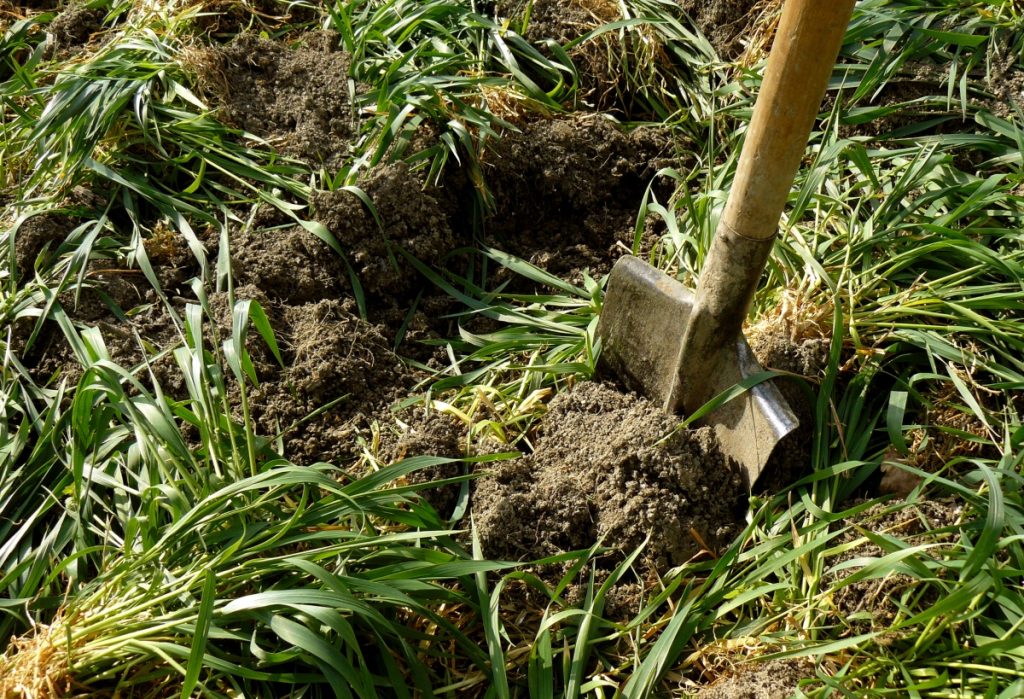
When to Till Green Manure
You need to dig green manures into the soil three to four weeks before you want to plant your next crop or when the plants are reaching maturity, whichever comes first.
You don’t want the green manure plants to get too woody or to go to seed. It is also important to cut the green manure crops before they fully flower and start taking nutrients from the soil.
As a general guideline, allow eight weeks for the green manure to grow and six weeks for it to decompose.
Remember to dig in grazing rye at least three weeks before you sow seeds for your next crop, as rye releases substances into the soil that inhibit seed germination.
However, it is excellent for preventing weeds, and you can overcome the delay by planting seedlings instead of seeds.
Final Thoughts
Now that you know more about green manure and the advantages and disadvantages you can decide whether to use this permaculture technique to improve your soil.
Whether you have a small backyard vegetable garden or a lush forest garden, using green manures is an eco-friendly, organic way to replenish or improve your soil with minimal input.
You can also visit our Permaculture Resource Hub to find out more about permaculture and other regenerative farming techniques.
